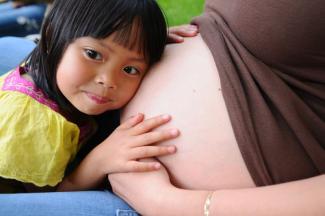Editorial
Unfinished business

The reasons for failing the MDGs for maternal and child health are varied: for one, while progress has been made in many countries with high mortality rates, not all groups have benefited. Poor and marginalised communities (primarily women and girls) have been left behind. Moreover, the data on health issues such as births and deaths is often missing or tend to be poor and unreliable. This has made it difficult to implement effective health and development policies.
In many sub-Saharan countries, teenage pregnancy is a serious problem. According to WHO, complications resulting from pregnancy and birth are the second leading cause of death in girls aged 15 to 19 throughout the world. Expectant mothers are often even younger. Teenage pregnancy is usually a consequence of societal circumstances. The girls concerned mostly grow up in poverty and are not well educated. They are not provided with sufficient sexual education, and many of them do not even know how they become pregnant and how to prevent it. Further, girls are often unable to practise birth control even if they wanted to, because they have no access to contraceptives.
These problems have been documented and identified by the MDGs and by the 2030 Agenda.The obstacles to maternal and child health have been identified and solutions are well understood. Nonetheless, action is missing in many places.
So, what needs to happen? Women and girls are often kept in the dark about sexuality. They lack the right to make their own decisions about their bodies and their lives, especially concerning when and how many children they wish to have. There needs to be societal change. Sexual education should take place in schools, health centres, social institutions and at home as well. This would prevent many unwanted pregnancies and promote female equality.
Every national government should collect better data in order to obtain reliable information, specifically pertaining to the problems faced by women and girls. How many girls are forced to leave school early due to marriage, teenage pregnancy and sexual violence? How many girls under the age of 15 become mothers? To collect this information, civil registries must be established in order to process census data and birth records.
More generally, basic services must be available to all. Countries need comprehensive health-care systems with skilled staff to protect the health of mothers and newborns. Midwifes and paramedics need to be trained appropriately. All women and girls must be enabled to exercise their sexual and reproductive rights - and that includes access to contraceptives. This is particularly important for poor and marginalised people. They must be the primary focus of all policies.
Sabine Balk is member of the editorial team of D+C Development and Cooperation / E+Z Entwicklung und Zusammenarbeit.
euz.editor@fs-medien.de















